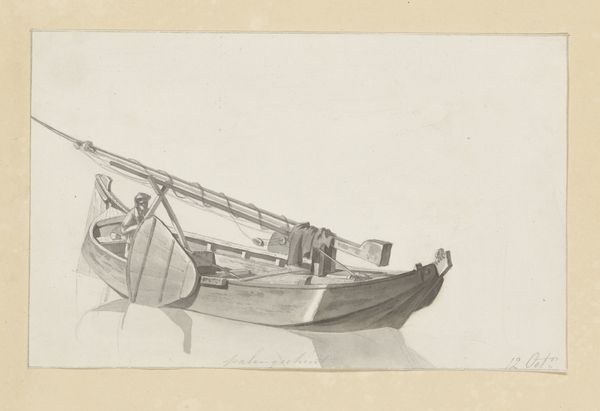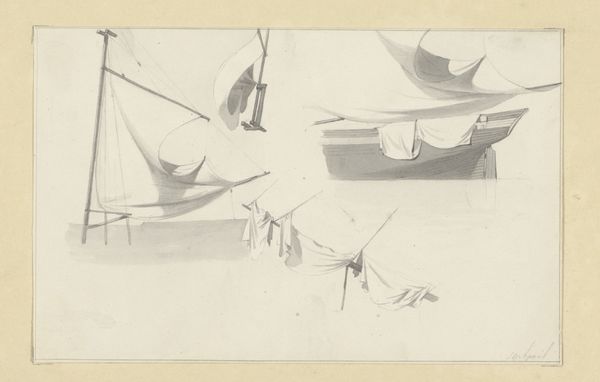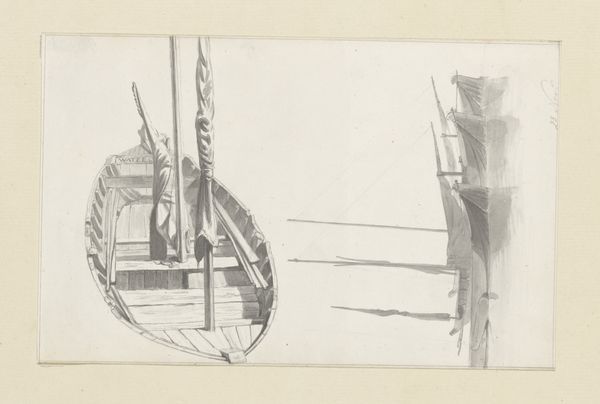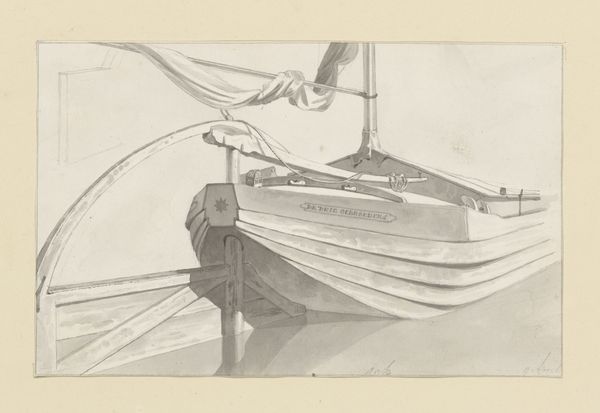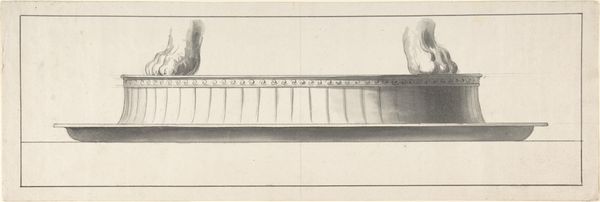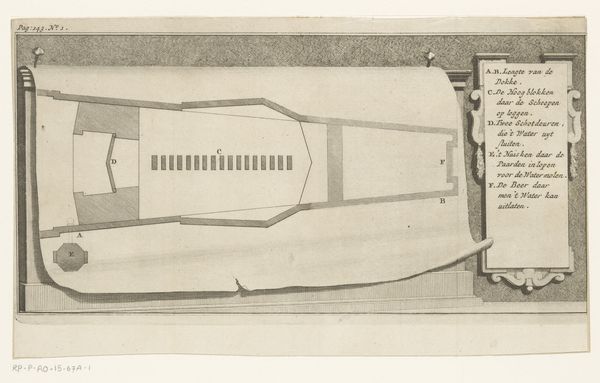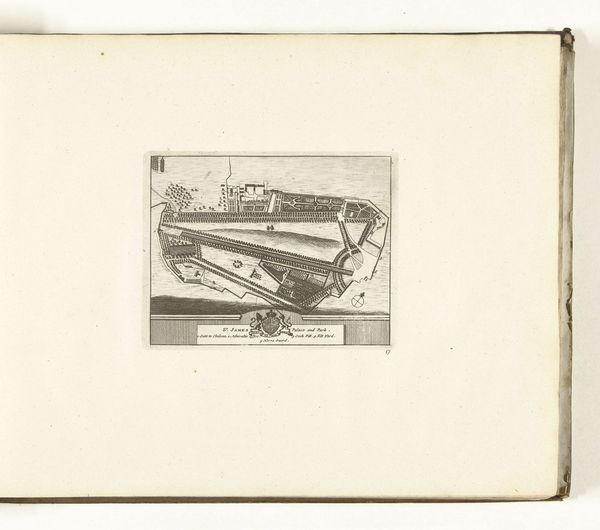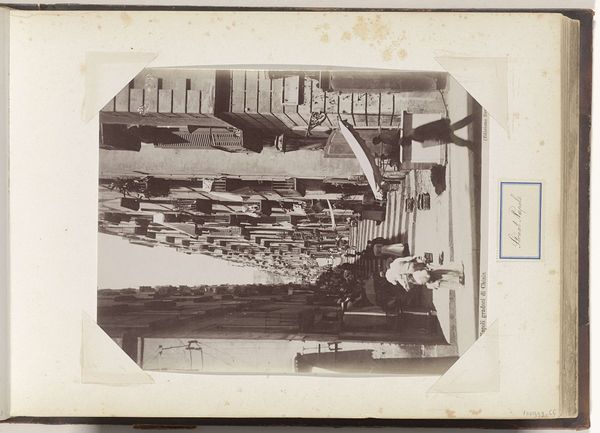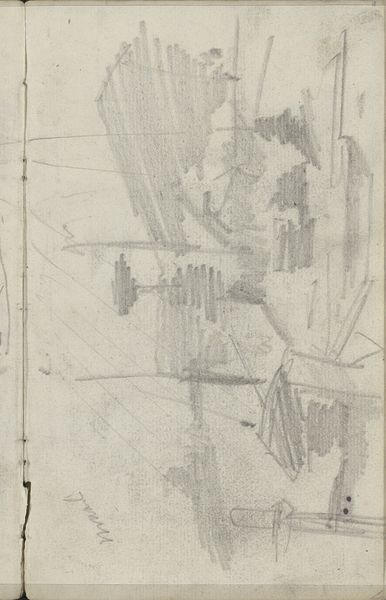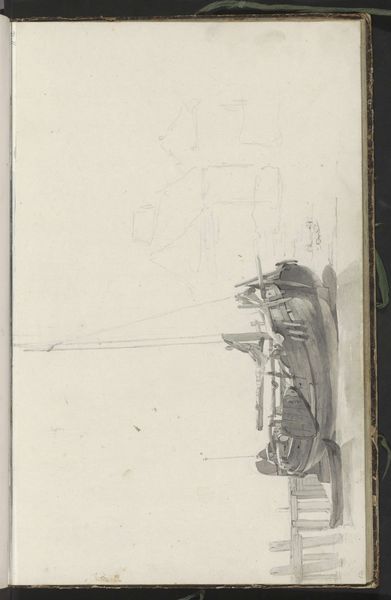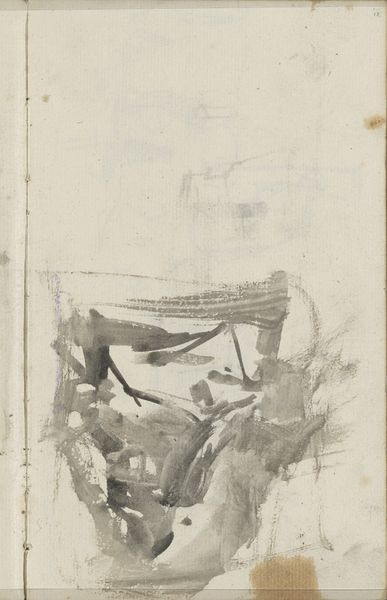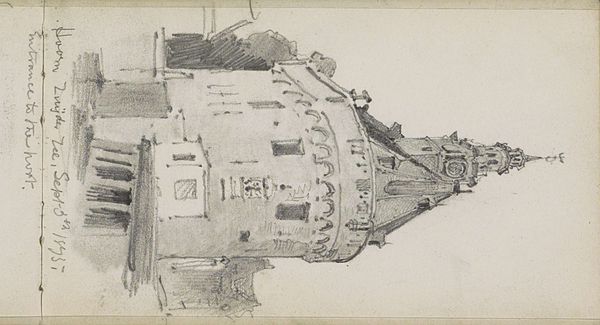
drawing, paper, pencil
#
drawing
#
dutch-golden-age
#
pencil sketch
#
paper
#
pencil
#
genre-painting
#
realism
Dimensions: height 239 mm, width 370 mm
Copyright: Rijks Museum: Open Domain
Curator: This drawing, simply titled "De lakenfabricage: een droogscheerbank," which translates to "The Cloth Manufacture: A Dry-Shearing Frame," was created sometime between 1672 and 1747, and is attributed to Willem van Mieris. Editor: It's interesting; my first impression is one of muted elegance. The grayscale rendering creates a quiet focus, highlighting the almost sculptural quality of this dry-shearing frame. There's a compelling sense of weight and precision. Curator: Exactly! Look at the detail Van Mieris captured with just pencil on paper. The work offers a window into the material processes that defined the Dutch Golden Age, where textiles were crucial to the economy and to social status. The labor and techniques are made visible. Editor: And visible with great sophistication. Consider the careful arrangement of light and shadow; the geometric solids resolve into something unexpectedly harmonious, given that the actual setting must have been noisy and quite dusty. What is striking is how the artist isolates this scene. Curator: By focusing on the mechanics and materiality of cloth production, van Mieris elevates a typically unexamined process, hinting at the unseen labor driving the era's affluence and commerce. Editor: I concur, there is great focus on labor. By employing a limited tonal palette, however, he directs the eye toward compositional and textual detail. See the layering of the cloth and the precise arrangement of implements, to reveal form as if the composition were sculptural. Curator: Indeed, he underscores how intrinsic craft and industry were to Dutch society. By making the tools and materials of textile work his focus, Van Mieris speaks to the socio-economic underpinnings of Dutch culture and the complex interplay of resources and labor in an age of expansion. Editor: Seeing the drawing through that perspective reveals something beyond mere rendering, which, itself is masterful. What strikes me, though, is that Van Mieris has also framed a sort of stillness amidst presumed activity, which gives the drawing an understated symbolic charge. Curator: It has been fascinating looking again at Van Mieris's craft in relation to its depiction of a different kind of craft, revealing the intersection of economics and daily practice in the 17th and 18th centuries. Editor: Agreed. Revisiting this seemingly simple study unveils complexities in structure, light, and material that certainly provoke fresh observations and thought about the period.
Comments
No comments
Be the first to comment and join the conversation on the ultimate creative platform.
